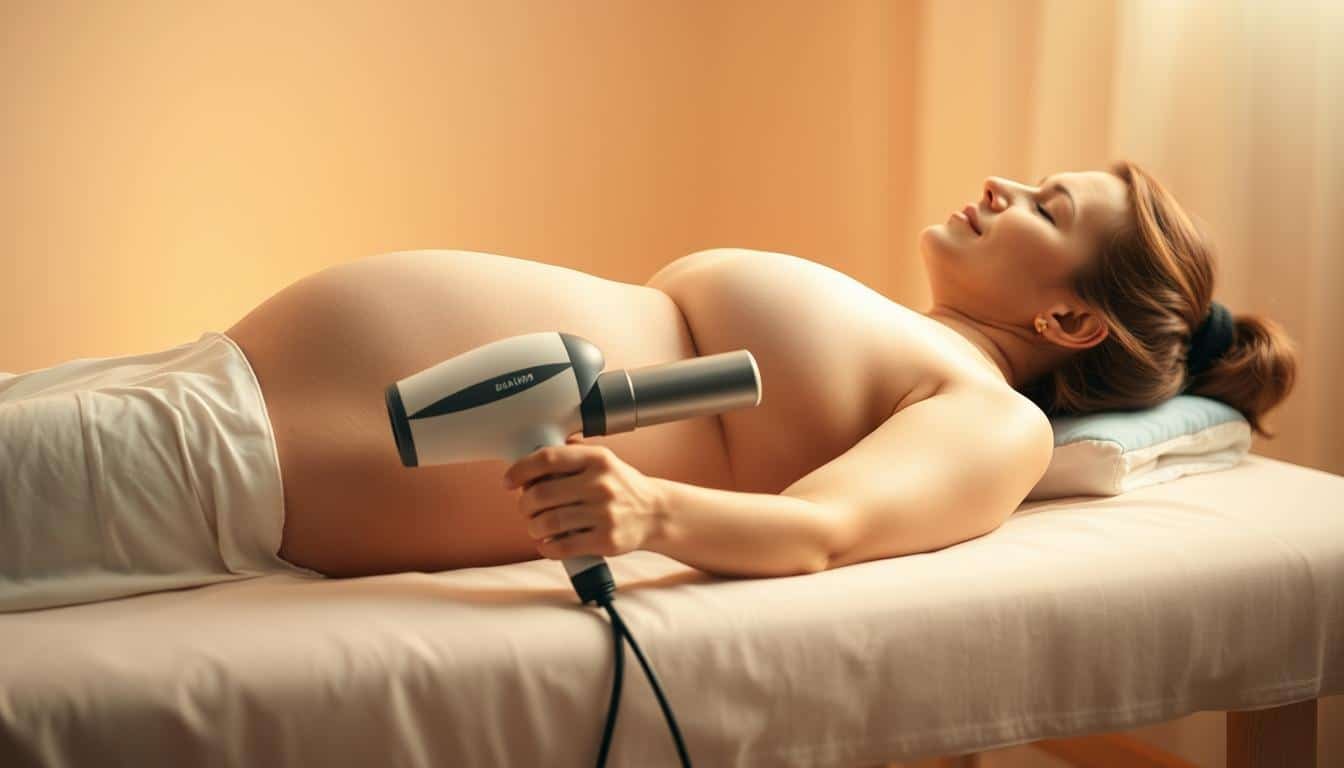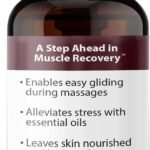Picture this: Sarah, 28 weeks into her first pregnancy, stares longingly at the percussion therapy device she once used after marathons. Her lower back screams for relief, but her hands hover nervously above the trigger. “Is this thing now friend or foe?” she wonders, mirroring the dilemma countless expecting parents face.
That innocent-looking gadget in your closet isn’t just battling muscle knots anymore – it’s navigating a biological wonderland. Your body becomes a carefully balanced ecosystem where even familiar routines need reevaluation. We’re not talking about avoiding sushi or hot tubs here, but rather understanding how heightened sensitivity and circulatory changes rewrite the rules of self-care.
Our mission? To decode why your pre-pregnancy recovery tool requires a whole new playbook. From altered blood flow patterns to joints that feel like overstretched elastic bands, we’ll explore how temporary bodily transformations demand tailored approaches to tension relief. This isn’t about fear-mongering – it’s about smart adaptation.
Key Takeaways
- Pregnancy triggers unique physiological changes affecting muscle therapy choices
- Safety considerations outweigh previous routines with percussion devices
- Professional consultation is crucial before using vibration-based tools
- Body awareness becomes critical for managing intensity and locations
- Adaptation strategies differ significantly across trimesters
Understanding Massage Guns and Their Benefits
Let’s cut through the noise: these buzzing gadgets aren’t magic wands, but they’re closer to science than sorcery. Imagine tiny jackhammers throwing a disciplined rave in your stiff shoulders – that’s essentially how these tools operate through rapid percussion.
The Science of Targeted Muscle Recovery
These devices deliver up to 40 strokes per second, reaching muscle layers manual hands can’t. The rhythmic pulses boost oxygen-rich blood flow by 75% compared to static pressure, according to sports medicine studies. This turbocharges recovery while flushing out lactic acid.
Advantages Over Traditional Methods
Why choose vibration therapy over spa appointments? Three words: precision, control, and consistency. Unlike human practitioners, these tools maintain exact pressure levels across sessions. Our guide to back therapy techniques shows how adjustable heads target specific muscle groups effectively.
| Feature | Manual Therapy | Percussion Device |
|---|---|---|
| Pressure Control | Variable | Consistent |
| Session Cost | $60-$150 | One-time purchase |
| Treatment Depth | Superficial layers | Deep tissue reach |
While traditional methods excel in personalized care, modern devices offer unmatched convenience. They’re like having a physical therapist on speed dial – minus the scheduling headaches. But remember: what works for athletes needs careful adaptation for expectant bodies.
Why Pregnancy Requires a Specialized Approach

Imagine your body suddenly becoming a construction zone with neon “DETOUR” signs everywhere. That’s pregnancy in a nutshell – a nine-month renovation project where every system gets rewired. What worked yesterday might now qualify as reckless behavior, thanks to new fluid dynamics and seismic shifts in your infrastructure.
Blood volume increases by 50% during this time, turning your circulatory system into rush-hour traffic. Add joints looser than a politician’s promises, and you’ve got a recipe for needing bespoke solutions. The same device that once melted tension now requires the precision of a bomb squad technician.
Three key factors demand recalibration:
- Pressure sensitivity that turns gentle vibrations into earthquake simulations
- Areas near the womb becoming no-fly zones
- Blood clot risks doubling down like blackjack at a Vegas table
Current research on vibration tools and fetal development could fit on a Post-it note. As one OB-GYN quipped: “We know more about TikTok trends than percussive therapy safety for expectant mothers.” This uncertainty transforms every decision into a risk-benefit analysis worthy of Wall Street traders.
Your body’s new reality requires ditching one-size-fits-all advice. Think of it as upgrading from bicycle training wheels to piloting a jumbo jet – the stakes demand expert co-pilots and customized flight plans.
Massage Gun During Pregnancy: Safety Guidelines
Let’s get one thing straight: your body’s current VIP status demands protocol changes. That buzzing gadget in your hand? It’s now governed by three sacred rules – consult, calibrate, and cap it.
First stop: your healthcare provider’s office. Think of their approval as the backstage pass you need before this show starts. “But I used it before!” doesn’t cut it when hormones are rewriting your playbook daily. Their green light determines if, when, and how you proceed.
Got clearance? Time to channel your inner Zen master. Start with settings so gentle they’d barely ruffle a dandelion. We’re talking 10-15 second passes – enough to whisper “relax” to tight muscles without shouting through a megaphone. Three to five sweeps max per area keeps things safer than a padded room.
Intensity control becomes your new obsession. That turbo mode? Bury it deeper than last year’s resolutions. Research shows excessive vibration might send mixed signals to your circulatory system, which is already working overtime. Keep sessions shorter than a TikTok reel – two minutes max per muscle group.
- Treat provider approval like concert tickets – no entry without it
- Dial intensity down until it feels like kitten paws, not jackhammers
- Set timers like you’re defusing tension bombs
Remember: this isn’t about denying relief, but smartly negotiating with your transformed biology. When in doubt, err on the side of caution – your future self (and tiny roommate) will thank you.
Precautions and Contraindicated Areas

Navigating your body’s landscape now requires the precision of a cartographer mapping uncharted territory. Some zones demand red markers while others welcome gentle exploration. Let’s chart the forbidden frontiers and safe harbors.
Abdomen: The Ultimate Restricted Zone
Your midsection isn’t just growing – it’s become a VIP lounge with strict bouncers. Even light pressure here could send mixed signals to your hormonal security team. Research suggests vibration near the womb might trigger unnecessary contractions, like ringing a dinner bell when the kitchen’s closed.
Lower Back & Legs: Tread Carefully
What once eased tension now risks becoming a circulatory party crasher. With blood volume skyrocketing, lower body treatment could lead to fluid traffic jams. Think of your legs as delicate soufflés – too much agitation might deflate their stability.
| Green Light Areas | Red Light Zones |
|---|---|
| Shoulders | Abdomen |
| Upper Back | Lower Back |
| Neck (sides) | Thighs |
| Arms | Calves |
Stick to upper regions like a well-mannered houseguest. Gentle passes across shoulder blades or neck sides offer relief without overstaying their welcome. Always consult your healthcare navigator before charting these courses – their maps beat any GPS for personalized routes.
Maximizing Benefits While Minimizing Risks
Walking the tightrope between sweet relief and safety requires more finesse than a trapeze artist’s finale. Our goal? To help you pirouette through discomfort without missing a beat.
Enhancing Circulation and Reducing Swelling
Think of your circulatory system as a bustling highway. Gentle percussion helps ease traffic jams in swollen legs and feet. Improved blood flow acts like a VIP lane for nutrients racing to support both mother and baby.
Research shows controlled vibration can reduce fluid retention by 30% when applied correctly. Focus on calves and shoulders – these safe zones become your allies against puffy ankles and stiff joints.
Targeting Muscle Tension Gently
Your shoulders aren’t just carrying emotional baggage these days. A light-touch approach melts stiffness without overwhelming sensitive areas. Pro tip: Use the flat head attachment like you’re petting a nervous cat – all whisper, no roar.
Studies reveal rhythmic therapy lowers cortisol levels by 25% in expectant mothers. This isn’t about power-washing tension away, but coaxing muscles into cooperation. Pair short sessions with proper hydration for maximum effect.
Balancing relief and caution isn’t just smart – it’s an art form. When wielded wisely, these tools become partners in your wellness journey, not adversaries. Always consult your care team to keep both you and your tiny sidekick thriving.












